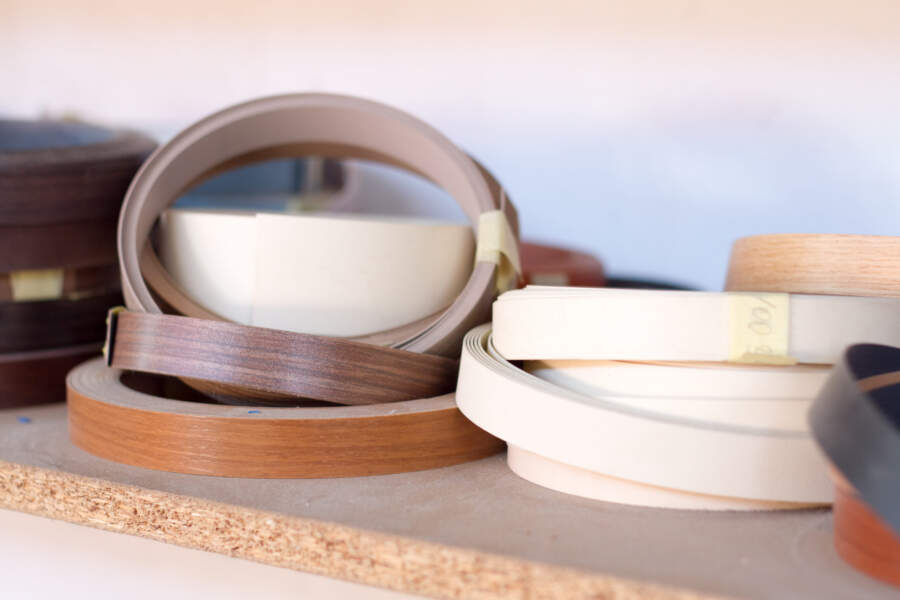Edge banding, particularly with PVC edge banding, is a critical step in the process of finishing furniture and woodworking projects. When done correctly, PVC edge banding provides a seamless and polished appearance to the edges of materials, contributing to the overall aesthetic appeal. However, like any woodworking technique, PVC edge banding can sometimes present challenges. In this guide, we will explore common PVC edge banding issues and provide troubleshooting tips to help woodworkers achieve a flawless finish.
Common PVC Edge Banding Issues:

Peeling or Lifting:
Possible Causes: Insufficient PVC adhesive application, improper pressure during application, or contamination on the substrate. Troubleshooting Tips: Ensure proper surface preparation, apply PVC adhesive evenly, use adequate pressure during application, and check for contaminants on the substrate.
Uneven Adhesive Application:
Possible Causes: Inconsistent pressure during PVC adhesive application, clogged nozzle or roller, or PVC adhesive viscosity issues. Troubleshooting Tips: Clean PVC adhesive application tools regularly, check PVC adhesive viscosity, and maintain consistent pressure during application.
Color Mismatch:
Possible Causes: Differences in dye lots, exposure to light, or variations in substrate material when using PVC edge banding. Troubleshooting Tips: Source PVC edge banding from the same dye lot, store materials in controlled environments, and test for color consistency before full PVC edge banding application.
Bubbling or Blistering:
Possible Causes: Air trapped between the substrate and PVC edge banding, inadequate PVC adhesive activation, or excessive heat during application. Troubleshooting Tips: Use a roller to remove air bubbles, ensure proper PVC adhesive activation, and control temperature during PVC edge banding application.
Rough or Uneven Edges:
Possible Causes: Dull cutting tools, improper trimming techniques, or low-quality PVC edge banding material. Troubleshooting Tips: Use sharp cutting tools, employ proper trimming techniques, and invest in high-quality PVC edge banding material.
Overhang or Underhang:
Possible Causes: Incorrect sizing of PVC edge banding, inaccurate cutting, or misalignment during application. Troubleshooting Tips: Measure PVC edge banding accurately, use precision cutting tools, and ensure proper alignment during application. Best Practices for PVC Edge Banding:
Surface Preparation: Before applying PVC edge banding, ensure that the substrate is clean, smooth, and free from contaminants. Sand the edges to create a surface that promotes optimal adhesion.
PVC Adhesive Application: Apply PVC adhesive evenly, covering the entire surface where the PVC edge banding will be attached. Follow the manufacturer’s guidelines for PVC adhesive type and application.
Proper Sizing and Cutting: Measure PVC edge banding accurately and use sharp cutting tools to achieve clean and precise edges. Invest time in ensuring that the PVC edge banding is cut to the correct size before application.
Temperature and Pressure Control: Maintain recommended temperature conditions during PVC edge banding application, and use appropriate pressure to ensure proper adhesion. Too much or too little pressure can lead to various PVC edge banding issues.
Conclusion:
Mastering PVC edge banding troubleshooting is essential for achieving professional and durable finishes in woodworking projects. By understanding the common PVC edge banding issues and following best practices, woodworkers can overcome challenges and create furniture and woodwork with impeccable PVC edge banding. Remember, attention to detail, proper preparation, and precision are key elements in achieving a flawless PVC edge banding application.
Read Also: Top 9 Tips for Moving Across the Country



































































